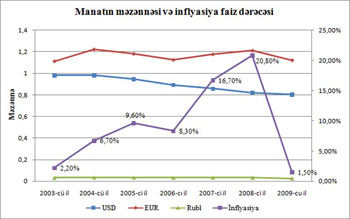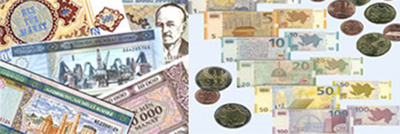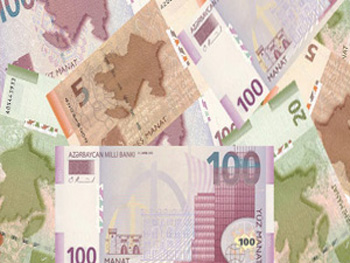Home page
» LAST 10 YEARS
» National currency reform: manat as one of the valuable currency of the world
National currency reform: manat as one of the valuable currency of the world Since 2004, one of the important prerequisites in the start of a new stage of economic reforms in Azerbaijan, then becoming the world\'s fastest growing economy was the renewal of the national currency, the manat. At present, Azerbaijan is one of countries of the world having most stable and valuable currency unit in the world. The exchange rate of the national currency- manat was continuously strengthened against world\'s leading currency, the dollar, the euro and the pound sterling. During the hard global financial crisis covering the period 2008-2010 Azerbaijan was able to keep a steady its national currency’s course. As a result, the country\'s population did face a serious damage as the resold of global financial crisis. Manat’s denomination  After the release of a new national currency in circulation it lived for a time period of quite. As a result of the ongoing economic crisis in the early 90-es manat fell rapidly in value, so the country has had an impact on the processes occurring in the world and neighbouring countries. Finally, in 1996, stabilization of the currency rate against the U.S. dollar started. In 1999 manat was strengthened for 15 percent against the dollar. Subsequently as a result of the strict monetary and credit policy carried out by the Central Bank One ($ 1 by 4940.) The currency-based monetary reform was begun in the country. This trend continued until the end of 2004. On the basis of the decree of the President of the country in 2005 the denomination has been carried out. Monetary reform as one of the most important national projects  The main purpose of the emission of the new generation banknotes in circulation at denomination process was formation of exchange rate of new manat to world leading currencies, to bring a design of national currency signs, its protection, face structure into compliance with international standards, to optimize the magnitude of the exchange rate and prices, to simplify the accounting and settlement system. At the same time, the transition to new generation banknotes had ensured clear expression of national and historical traditions, improve money circulation in the country, as well savings from state expenses in cash generation, transportation, storage and processing. Emission of new currency signs meeting the highest international standards in circulation in Azerbaijan was recorded in history as recent important national projects. At the moment, for the face value manats with exception of British pound sterling, the Japanese yen, the Kuwaiti Dinar, Latvian lat is considered as the world’s and the region\'s most valuable currency. At the same time, after the new manat was introduced into circulation it continuously strengthened its exchange rate against other leading currencies. The data released by the Central Bank Official on official exchange rate of foreign currencies shows that at the first working day of the year 2006, that is, at 1st day of putting the new manat into circulation 1 USD was equal to 0.9184 manat. In 2012, this figure amounted to an average of 0.786 manats. Thus, during this period the dollar devalued before manats for 14.4%, the euro for 4.5% (from 1,0882 AZN 1.0291), the pound for 21.9% (from 1,587 to AZN 1.2403), and ruble for 18.2 % (from 0.0261 to 0,0319 AZN). Compared to national currency of CIS countries the manat, generally, has no competitor. Key aspects of fixed-rate policy According to the report of the Central Bank on monetary–loan policy, remaining manat’s exchange rate as stable allows to prevent increase of inflation, the burden of external debt of economic subjects and dollarization, and in general prevention of real money incomes of the population . However, to prevent the significant strengthening of the exchange rate and thereby avoid to neutralize negative impacts, sterilization of foreign exchange on the competitiveness of non-oil sector, the Central Bank had neutralized 639.4 million in the I semi-year first six months. As a result, the moderate rate of exchange against the U.S. dollar during the period, 0.1% of the consolidated total. The Central Bank stated that the stability of the exchange rate of the national currency had impacted positively on macroeconomic stability. During the year, the bilateral exchange rate of the Central Bank ensured the stability of the national currency. But the real multilateral exchange rate of manat was devalued, which is good in terms of improving the competitiveness of non-oil sector. Thus, having one of the world\'s most robust national currency Azerbaijan has strengthened further its economic position, and has become an attractive country for foreign investments. As stated by country President Ilham Aliyev Azerbaijan\'s economic potential and industrial capacity allows to retain manat as strong as today.
|
